|
|
Advertisement:
|
|
Leo, Thuban and Raptor |
|
Join the community - in the OCAU Forums!
|
Benchmarking and Conclusions
Now, with some numbers to throw around, how does it stack up in a bunch of tests?
Everest Cache and Memory Benchmark:
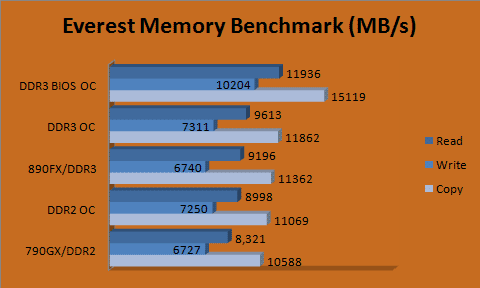
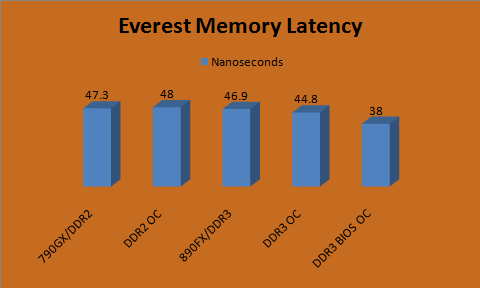
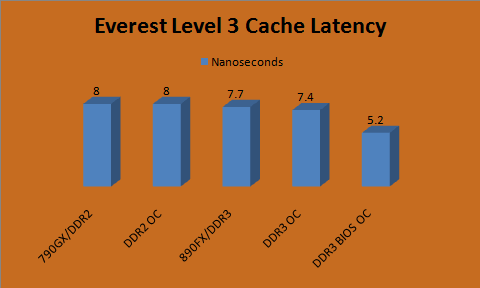
The first synthetic test doesn’t yield many surprises. DDR2 holds its own, especially in the write tests. The effect of overclocking the CPU northbridge is dramatic to say the least. Despite giving up 100MHz of core CPU clock, the 50% faster northbridge gives read, write and copy advantages of 19%, 28%, and 22% respectively. Memory latency decreases by 17% and the latency of the Level 3 cache drops by a massive 42%. This really is the best bit about Phenom II overclocking, if you haven’t been giving it due respect, get onto it!
wprime 2.03:
This popular benchmark has a nice ability to scale pretty much linearly with core count.

In what’s looking like a continuing trend, the DDR2 system is neck and neck with the DDR3 system, whilst the BIOS overclock, with a 400MHz advantage on all cores, shaves 9% off the second-best time.
Adobe Photoshop CS5:
There was a time when Adobe’s Photoshop was the benchmark of choice for a lately resurgent hardware manufacturer. Funny how times change! It is an application targeted (and priced) towards professionals, and professionals can be wary of overclocking for warranty and stability reasons, so it’s perhaps not surprising it doesn’t get much coverage in hardware reviews. Nonetheless, it can be pretty demanding, especially working on large files.
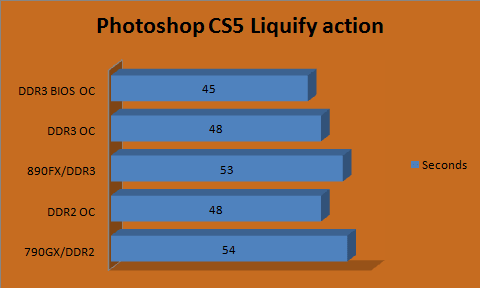
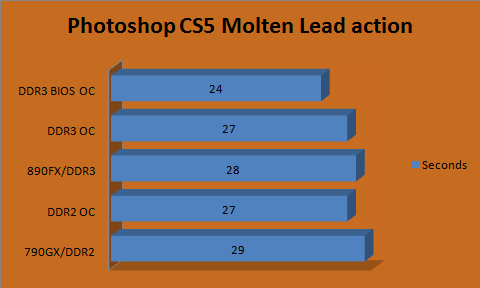
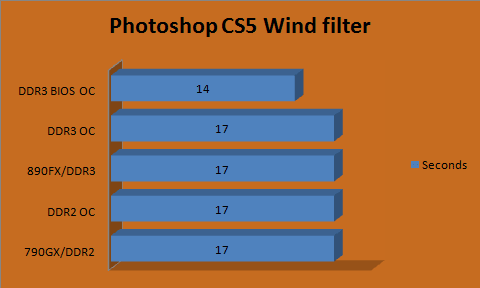
DDR2 hangs around annoyingly, refusing to give an inch to its bandwidth-bulging successor. Interestingly in the Wind filter, increasing clocks on CPU and RAM produced no noticeable results, but the CPU northbridge overclock produced a 20% gain. Overall, working in Photoshop using a modern multi-core CPU is a breeze, something that is further enhanced thanks to Adobe embracing GPU acceleration.
ConvertXtoDVD 4.0.12.327:
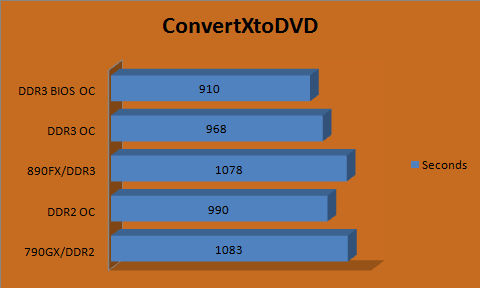
DDR3 notches up a 22-second win over DDR2 in the overclocked configuration, which only translates to 2%, but it’s better than previous tests. The BIOS overclock reduced the time needed to complete the transcode by a further 6%.
WinRAR:
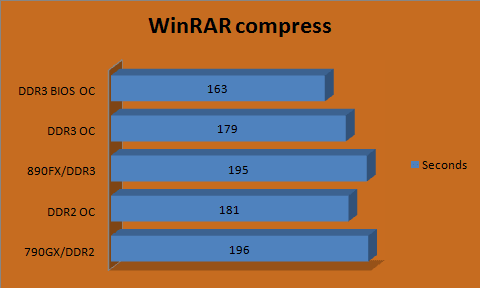
Again, DDR2 performs practically identically DDR3. The advantage to the BIOS overclock follows the wprime result at 9%, which funnily enough is just shy of the CPU clock speed advantage, suggesting that both benchmarks are highly dependent on CPU frequency and architecture, not memory.
DiRT 2:
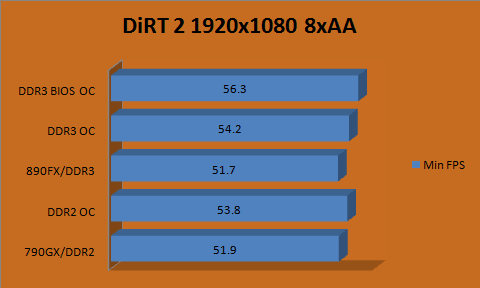
DiRT2 showed some gains from CPU overclocking in our performance scaling article, however we appear to have reached the limit of what the CPU can provide here. The BIOS overclock can only boast a 7% edge over the standard DDR2 system. With all configurations staying above a minimum 50 frames per second, the differences won’t be noticeable.
Conclusion:
The Western Digital 600GB VelociRaptor continues to be a thorn in the side of the inevitable SSD onslaught. Where the Raptor lacks raw performance, it bites back with vast swathes of storage area. 600GB is enough for a comfortable multi-OS configuration or just about every application and game you can think of installed at once. Against the older generation Raptors, it wins as expected, but the margin is perhaps a little underwhelming at times. Still, for around $370 it looks like decent value, and with the reliability upgrades it could be a little more reassuring than the comparative unknown of SSD performance degradation.
The Phenom II X6 1090T is the natural progression from Deneb, and the process changes are fantastic from an overclocking perspective. Turbo core is probably of more benefit to the lower processor models like the 1055T, as you gain the extra multipliers. With reports that the already-announced, release-date-pending, four-core variant will “unlock” to six cores, like the dual and tri-core Phenom II’s unlocked to quads, AMD looks like it will remain competitive in the middle class of CPU warfare.
MSI’s 890FXA-GD70 motherboard is undeniably a winner. The BIOS is brilliant, the board looks great, it clocks well, and apart from a few questionable inclusions like the “Green Power” button, it’s hard to find a glaring fault with. To top it off, the price is reasonable too. Motherboard competition is so fierce nowadays; we really are spoiled for choice.
|
|
Advertisement:
All original content copyright James Rolfe.
All rights reserved. No reproduction allowed without written permission.
Interested in advertising on OCAU? Contact us for info.
|

|


